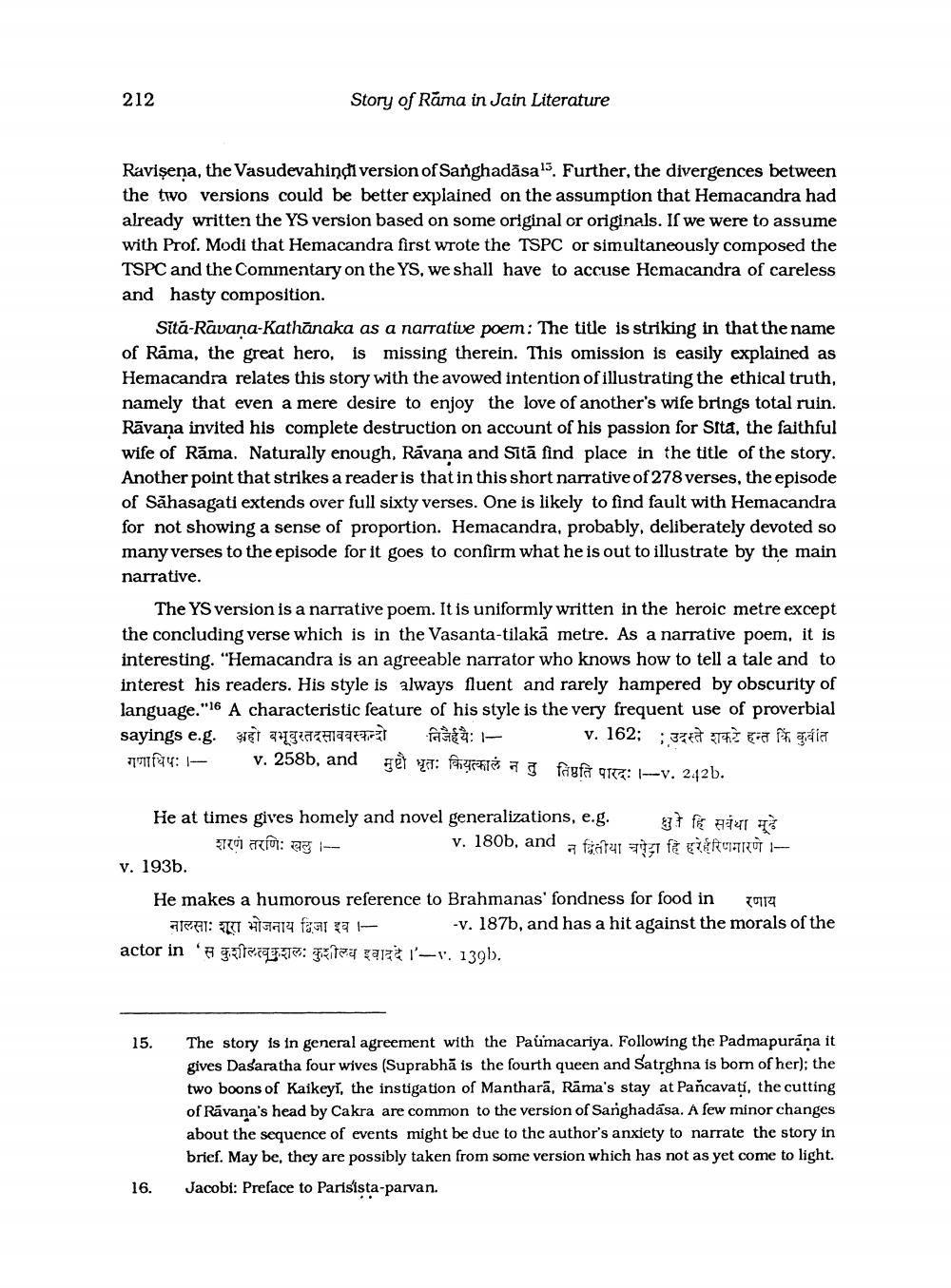________________
212
Story of Rāma in Jain Literature
Ravişena, the Vasudevahindi version of Sanghadāsals. Further, the divergences between the tivo versions could be better explained on the assumption that Hemacandra had already written the YS version based on some original or originals. If we were to assume with Prof. Modi that Hemacandra first wrote the TSPC or simultaneously composed the TSPC and the Commentary on the YS, we shall have to accuse Hemacandra of careless and hasty composition.
Sitá-Ravana-Kathānaka as a narrative poem: The title is striking in that the name of Rama, the great hero, is missing therein. This omission is easily explained as Hemacandra relates this story with the avowed intention of illustrating the ethical truth, namely that even a mere desire to enjoy the love of another's wife brings total ruin. Rāvana invited his complete destruction on account of his passion for Sita, the faithful wife of Rāma. Naturally enough, Rāvana and Sitā find place in the title of the story. Another point that strikes a reader is that in this short narrative of 278 verses, the episode of Săhasagati extends over full sixty verses. One is likely to find fault with Hemacandra for not showing a sense of proportion. Hemacandra, probably, deliberately devoted so many verses to the episode for it goes to confirm what he is out to illustrate by the main narrative.
The YS version is a narrative poem. It is uniformly written in the heroic metre except the concluding verse which is in the Vasanta-tilakā metre. As a narrative poem, it is interesting. "Hemacandra is an agreeable narrator who knows how to tell a tale and to interest his readers. His style is always fluent and rarely hampered by obscurity of language."16 A characteristic feature of his style is the very frequent use of proverbial sayings e.g. Et aug27149777 ht -
v. 162; ; 32+ TAI GT Praia ufu: 1 v. 258b, and yet ya: YCH fayfa 17
He at times gives homely and novel generalizations, e.g. far To fu es -
v. 180b, and a featu 1941 ERURUT v. 193b.
He makes a humorous reference to Brahmanas' fondness for food in 70114 aka: IT 1914 fast 9
-v. 187b, and has a hit against the morals of the actor in gacqua: hitza gazt i-". 139b.
15.
The story is in general agreement with the Paumacariya. Following the Padmapurana it gives Dasaratha four wives (Suprabhā is the fourth queen and Satrghna is born of her); the two boons of Kaikeys, the instigation of Mantharā, Rāma's stay at Pancavați, the cutting of Rāvana's head by Cakra are common to the version of Sarghadása. A few minor changes about the sequence of events might be due to the author's anxiety to narrate the story in brief. May be, they are possibly taken from some version which has not as yet come to light. Jacobi: Preface to Parisista-parvan.
16.




